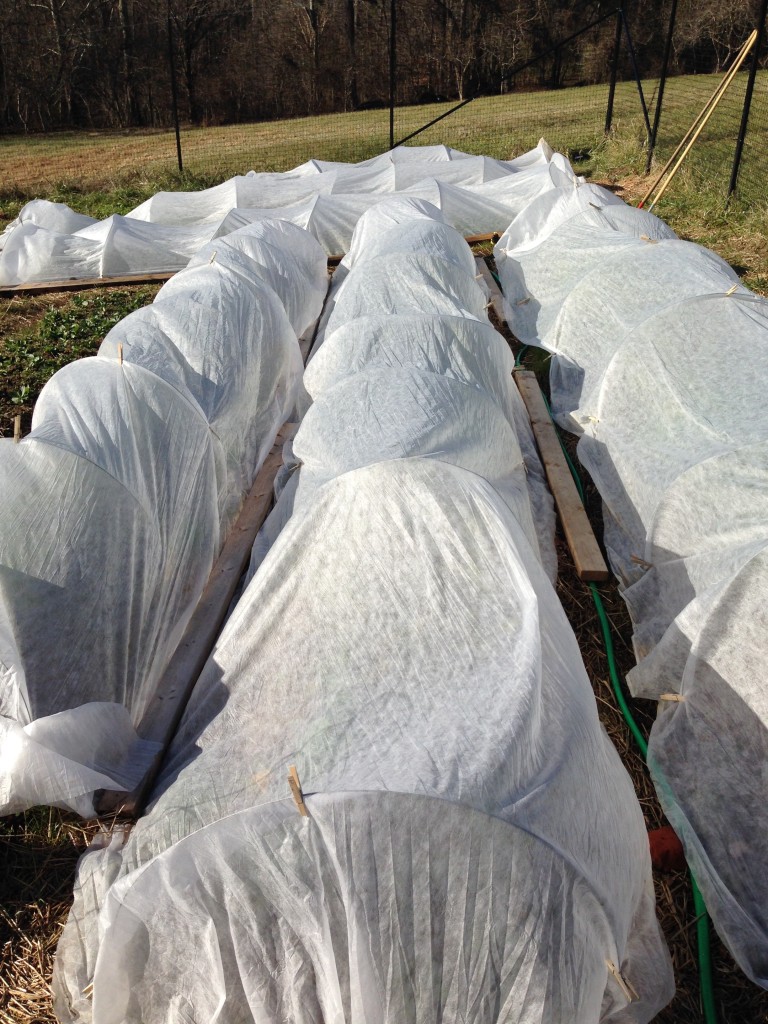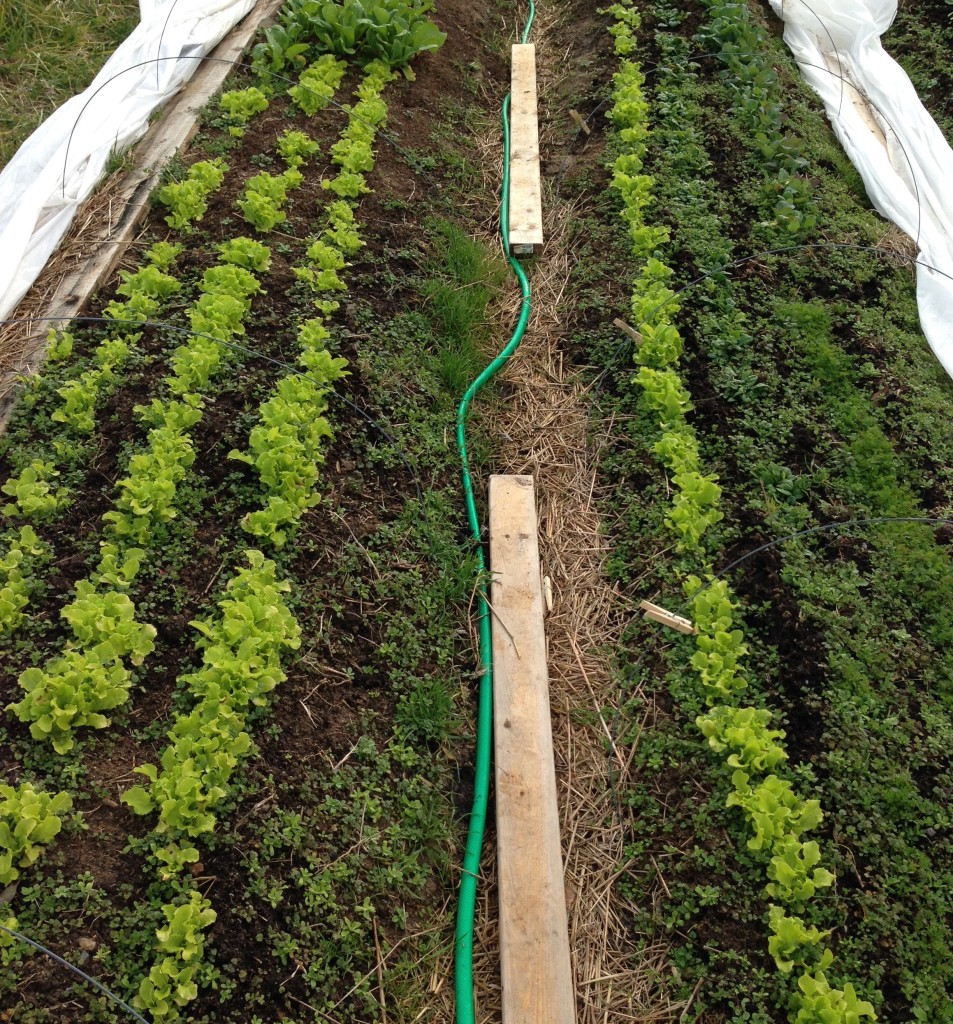You don’t need to have a fancy greenhouse to protect your fall crops and enjoy fresh greens and root vegetables grown outdoors all winter long. Making your own low tunnels is an easy project that can be started and finished in an afternoon. Depending on what type of fabric you use, you can increase the temperature around your crops by up to 8º, thus making it possible to keep your garden productive through the coldest months. It can also help you get an earlier start in the spring.
One of the simplest designs for a low tunnel only requires a thick gauge of wire and a pair of wire cutters to create the structure. Cut the wire to the desired length, stick each end into the ground over your vegetables and drape a material such as Agribon or greenhouse plastic over the whole thing. Six foot sections of nine gauge wire work well and are easy to source from your local hardware store. The wire should be spaced three to four feet apart. For a more structurally stable hoop, spring for a thicker wire gauge, or decrease the spacing between each hoop.
When building a low tunnel, it’s important that the material you use to cover your plants is a UV stabilized agricultural grade fabric or plastic. Any other type of material will break down over the course of a season and will need to be replaced each year. If you take good care of your row cover, you can easily expect to use it for years!
Agribon is a lightweight, UV stabilized, polypropylene fabric that comes in a variety of thicknesses. It is breathable, so you don’t have to worry about venting your plants during the day, which means during a long cold spell, you only have to remove the fabric when it’s time to harvest. During mild periods of the winter, it’s a good idea to remove the fabric from your low tunnels. This makes for hardier plants, and allows them to make the most of bright days.

The lighter weight Agribon is best suited for keeping insects off crops, while the thicker fabrics provide frost protection for sensitive fruits and veggies. The thicker the fabric, however, the less light can pass through, so it’s important to try to find a balance between keeping your crops from being exposed to hard freezes, and allowing them to soak up as much light as possible. The best of both worlds for central North Carolina seems to be the medium weight AG-30, which can increase the temperature between 4º-6º and allows for 70% light transmission.
AG-50 has a 6º-8º temperature increase, but only 50% light transmission. This makes it good to have on hand for emergencies where temperatures might fall into the teens and single digits, but since not much light can reach the plant, it isn’t ideal to cover them with this weight over the long term.

No matter which thickness of fabric you choose, it’s important that it’s very well secured. Landscaping staples work the best and are very strong and secure (fold the edge of the fabric over itself a few times to prevent tearing), or you can just weigh down the edges with rocks or spare lumber. Waking up to find your row cover was blown away and all of your leafy greens are frost damaged beyond recognition is one of the worst gardening feelings of all time. So, on windy nights be sure to add some back up weights just in case. My personal preference is to secure one side of the fabric with landscaping staples and then use bricks, rocks, and lumber on the other side. This makes it easy to lift the cover off one side of the hoop on nicer days.

Leave a Reply